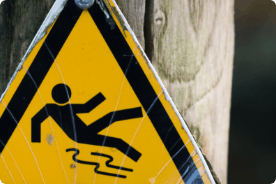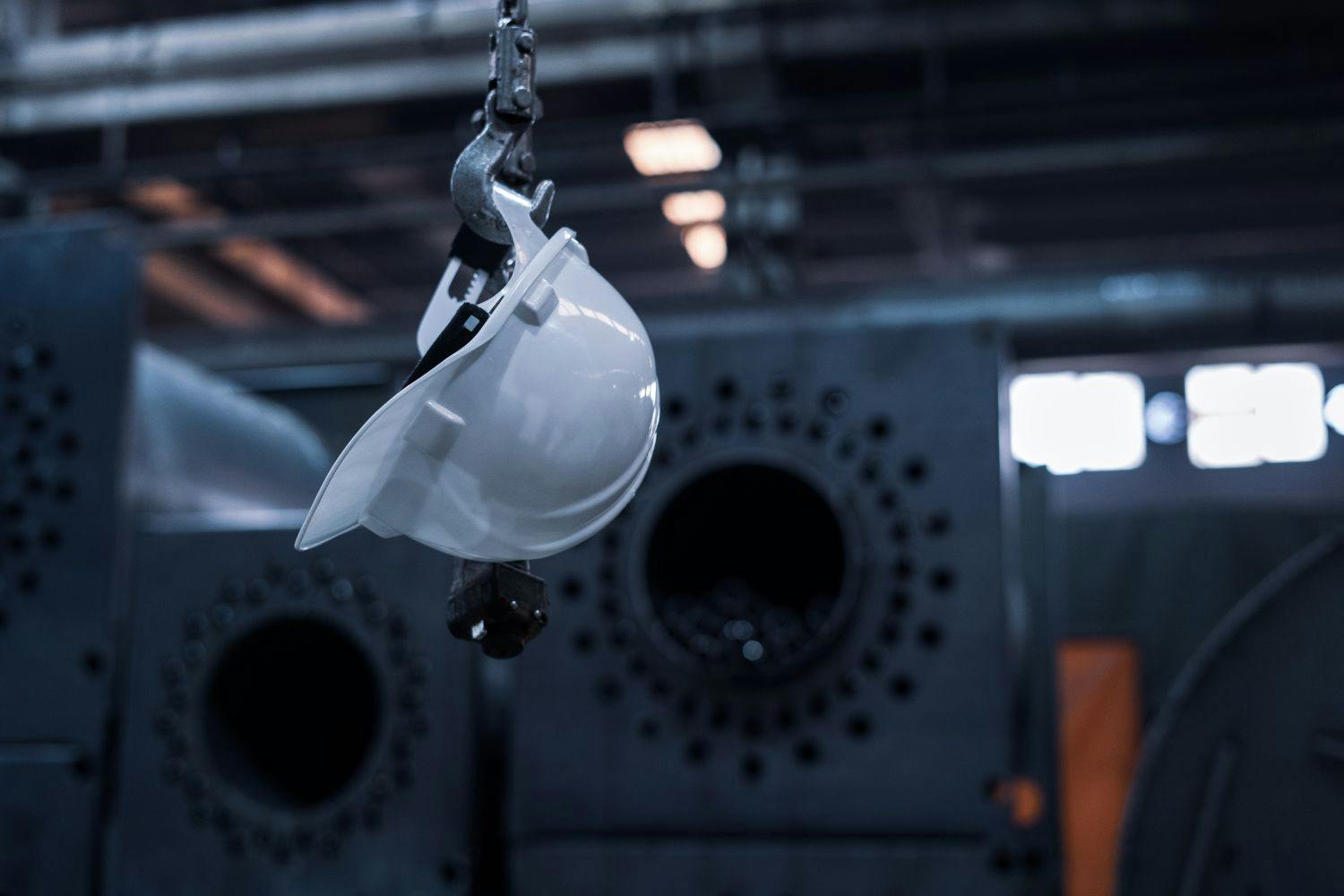First published on Wednesday, Jun 24, 2020
Last updated on Tuesday, Jul 26, 2022
Many businesses now have to use the latest technology such as computers or monitors to perform their work. But those devices can pose health risks for your employees.
Extensive screen time or extended periods of time at a workstation can cause problems, so you must follow the UK health & safety laws to protect your staff.
If assessments aren't carried out regularly and an employee becomes injured, you could receive compensation claims.
In this guide, we'll explain what display screen equipment is, how to protect your worker's health and why you need a DSE assessment.
What is Display Screen Equipment?
Display screen equipment (DSE) means any graphic display screen. It covers a range of screens including:
- PCs.
- Laptops.
- Tablets.
- Smartphones.
- CCTV screens.
DSE work doesn't cause permanent damage to the eyes. But extended periods of this work can lead to health risks, such as:
- Tired eyes.
- Discomfort.
- Temporary short-sightedness.
- Headaches.
Being aware of where your equipment is can help you prevent any hazards in the workplace. This way, you can put in place measures to support your employees or DSE users.
What is a DSE User?
A user or operator is a worker or self-employed person who uses display screen equipment (DSE) as a significant part of their normal work.
The Display Screen Equipment Regulations (1992) apply to workers who use DSE daily (for an hour or more at a time). The law applies if users are at a fixed workstation.
But the regulations don't apply to workers who use DSE infrequently or only use it for a short time.

Is a DSE Assessment a Legal Requirement?
Yes, under the Health and Safety (Display Screen Equipment) Regulations 1992, you must complete a workstation assessment. Depending on your results, you must then:
- Reduce any risks you find with your worker's workstation.
- Impose regular breaks for your staff.
- Allow employees to take eye tests if they ask for them.
How to Protect Your Workers Against Health Risks
As an employer, you have a duty of care to protect staff's workplace health. To protect them from DSE, there are several things you must do. Employers must:
- Conduct a risk assessment for DSE.
- Reduce risks where possible.
- Provide eye tests if a worker asks for one.
- Provide training for workers.
The incorrect use of DSE, poorly designed workstations or work environments can lead to pain in several places, including:
- Necks.
- Shoulders.
- Backs.
- Arms.
- Wrists.
- Hands.
Employees may also get fatigued or encounter eye strain from extensive use of DSE. Eye strain can become a problem for employees if display screens aren't in the right position.
To protect workers' health, an assessment can be conducted to prevent injuries.
What is Display Screen Equipment Assessment?
An assessment for DSE is like any other risk assessment. Employers must carry out an assessment to identify the hazards and assess the likelihood of harm to those that may be affected by using the equipment.
As an employer, you should:
- Look at the whole workstation, including equipment, furniture and work conditions.
- Look at the role being performed.
- See if there are any special requirements for a member of staff. For example, if they have a disability.
Assess to see whether there are poorly designed workstations or work environments, as both can cause a range of health risks.
You should also do an assessment when:
- A new workstation is set up.
- A new user (worker) starts.
- A change is made to an existing workstation.
- A user complains about pain or discomfort.
- Employees change desks regularly (hot desking).
If a user is in pain or discomfort, they should report it to their line manager.
DSE Software for Assessment
Software packages can assist a worker's training and help them take part in a basic risk assessment.
But you should make sure a trained assessor looks at the user assessment results. The assessor should clarify any doubts, provide any feedback and make sure any problems are resolved.
For example, making changes to the DSE or if an employee wants to change desks regularly or prefers hot-desking, can prevent neck pain.
What Are the Benefits of DSE Software?
There are several benefits to introducing DSE software into your business, including:
- Improved health.
- Reduced absenteeism.
- Improved productivity.
- Increase in wellbeing for employees.
- Tailored training.
- Legal compliance.
Some of these benefits may be less significant if you use DSE infrequently.
Work Routine and Breaks
The UK law says that employers must plan work to ensure there are breaks for staff who are display screen equipment (DSE) users.
There is no legal guidance on how long work breaks should be. However, short breaks should be taken often rather than long ones.
For example, a break should be taken for 5 to 10 minutes every hour. Staff can also decide when to take these breaks from their workstation.
In many jobs, DSE users can do other tasks such as taking phone calls or attending meetings. Users are encouraged to get up from their workstations, move around or at least stretch.
It's important to allow your staff to go for their breaks, as DSE can prevent several health risks if not managed properly.

Should You Provide Training for Display Screen Equipment?
As employers, you must provide health & safety training and guidance for display screen equipment users. Training should include risks in DSE work and how to avoid these by implementing work practices. Training should include:
- How to achieve a good posture.
- How to adjust a chair and other furniture.
- How to adjust a display screen and lighting.
- A basic risk assessment.
- How to report problems.
This checklist can also be helpful for DSE users who work from home.

Working With Display Screen Equipment at Home
Many of your staff may choose to work from home as this gives them more flexibility over their schedule.
Luckily, the Health and Safety (Display Screen Equipment) Regulations apply to workers who permanently work at home. The law applies to hybrid working too.
Staff who choose to work from home must be supported. You must carry out an assessment to include:
- The suitability of the home for working.
- Putting in place any reasonable adjustments if needed.
- Provide DSE training.
Staff who work from home should have a suitable workstation, free from household distractions.
Do Employers Have to Pay for Eyesight Testing?
In some circumstances, an employer may have to pay. You may need to fund a pair of prescribed glasses that are specifically needed for DSE use.
Eye Tests for DSE Users
If a DSE user or worker requests an eye test, you must provide one and also pay for it.
This should be a full eye test by an optician or doctor, including a vision test and eye examination. In terms of the arrangement, you can let DSE users book the test and reimburse them for the cost later.
Glasses for DSE Use
Employers should only pay for glasses for DSE work if the test shows an employee needs special glasses prescribed for DSE use. If an ordinary prescription is needed, then employers do not have to pay for glasses.
Get Advice on Display Screen Equipment With BrightHR
As employers, you must identify the risks of DSE to protect workers' health & safety.
Using DSE daily is a significant part of many of your staff's normal work, so you need to manage their workstation with care.
You need to carry out assessments for DSE users, especially if they're using it for an extensive-time period. If a worker results in ill-health because you've neglected the results of an assessment, you could face a hefty compensation claim.
BrightHR can help you manage DSE with our BrightSafe helpline. Don’t hesitate to call us if you need any help with using DSE daily or whether the DSE regulations apply to you.
Book a free demo today or give us a call on 08007832806








